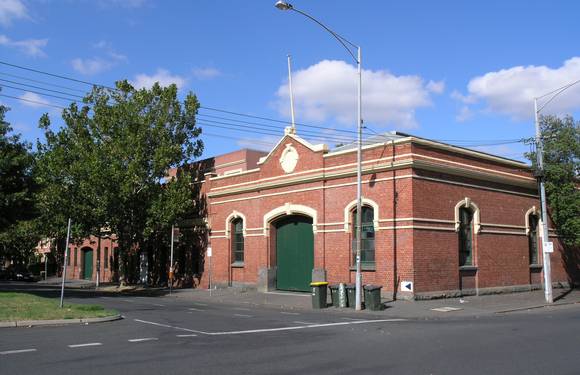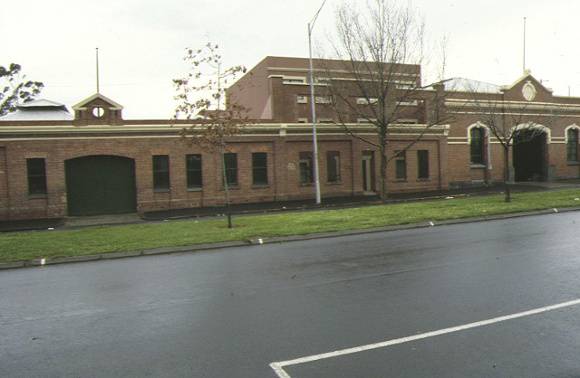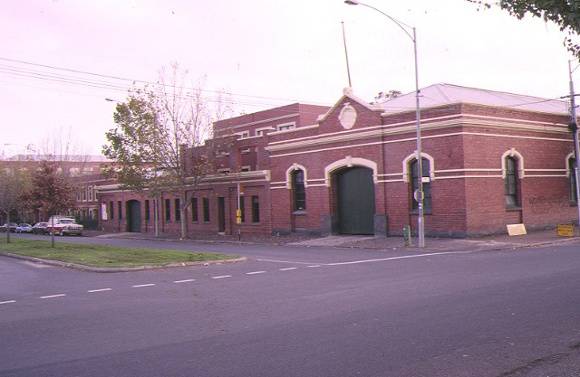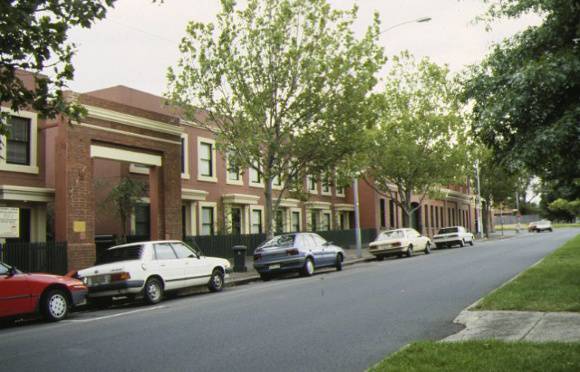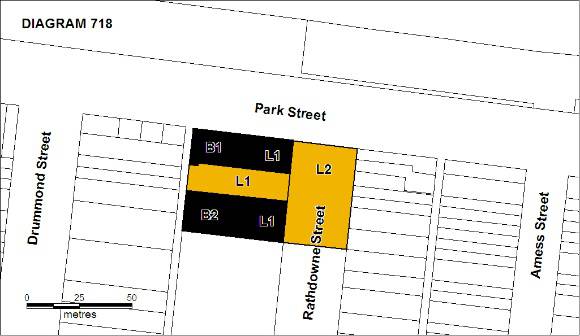| Back to search results » | Back to search page » |
|
FORMER CABLE TRAM ENGINE HOUSE
Other NamesRATHDOWNE GARDENS , NORTH CARLTON CABLE TRAM ENGINE HOUSE AND CAR DEPOT , NORTH CARLTON CABLE TRAM ENGINE HOUSE AND CAR SHED , CAR SHED Location1021-1029 RATHDOWNE STREET AND 440 PARK STREET CARLTON NORTH, YARRA CITY
File NumberFOL/15/35795LevelRegistered |
|
Statement of Significance
STATEMENT OF CULTURAL HERITAGE SIGNIFICANCE:
What is significant? Melbourne's cable tram network was developed in the late 1870s as a
planned public transport system for metropolitan Melbourne and was
constructed as a single major infrastructure project from 1884 to
1891. The system consisted of the cable tram engine houses which drove
the cables; the car sheds for housing the dummies and cars; the tracks
and the cable tunnels and the associated pits and terminal pits. The cable tram network was operated by two separate organisations.
The Melbourne Tramways Trust built and owned the cable tram
infrastructure which included the engine houses and the tracks and
cables and represented the various municipalities that the tramways
ran through. The operation of the system was contracted out to a
private company, the Melbourne Tramway & Omnibus Company
(MT&OC) who were responsible for providing the trams and building
the car sheds. The building which was the head office of the MT&OC
still remains at 669-673 Bourke Street. After 1916 the MT&OC's
lease to run the system expired and a new body, the Tramways Board
(TB), was established to replace both the MT&OC and the MTT and to
run the whole cable tram system as a single body. All of the land and
property of the MTT and the MT&OC was taken over by the TB. At the time of its construction the MTT system was the largest cable
tram network under single ownership in the world and the most
technologically advanced. It was a major influence on the development
of metropolitan Melbourne. The North Carlton route was opened on 9 February 1889 and ran from
Park Street along Rathdowne Street to Elgin Street where it linked
with the Collingwood service along Johnston Street to proceed along
Lygon Street to the city. This route provided the impetus for the
growth of the distinctive retail development along Rathdowne Street. The engine house was designed by MTT architect Robert Gordon and is
constructed of brick on a bluestone base and decorated with cement
plaster mouldings, cornices and architraves. The Rathdowne Street
facade is highlighted by projecting doorway with a gabled parapet. The
hipped metal truss roof is hidden by brick parapet. The building
housed the engine, drive wheels and the cable tensioning mechanism. A
single storey brick ancillary structure, believed to have been used as
the engine house office, is attached to the rear of the engine house.
The cable pits are believed to survive under the building's concrete
floor. The car shed was designed by architect Frederick Williams and is an
unadorned utilitarian brick structure with a wide central doorway and
narrow windows. The walls enclose a single open space that once
included tracks, pits and a turntable for storing, servicing and
turning the tram cars and dummies. It is believed that evidence of
these structure exists under the concrete floor. The North Carlton cable tram engine house and car shed were unusual
in Melbourne's cable tram network in that they were located together
at the end of the line. The practice elsewhere in the cable tram
network was to locate the engine houses at the centre of the line and
the car depot at the end. The only other instances of an engine house
and car shed being located together was at Toorak (corner Toorak Road
and Chapel Street) and on the Northcote line. However the latter was
privately constructed and operated and not part of the main MTT system
until the early 1920s. The cable tram system was gradually replaced by the electrical
powered system from the mid 1920s until 1940. The Rathdowne Street
route closed in 1936 and the engine house and car shed buildings and
land were sold.
How is it significant?
Why is it significant?
North Carlton Cable Tram Engine House and Car Shed are of
architectural significance as a rare instance of an engine house and a
car shed being located together. The only other instances of this was
at Toorak and Northcote. North Carlton Cable Tram Engine House and Car Shed are of
archaeological significance for the potential to provide information
on the cable tram operation. Tram tracks and cable tunnels may survive
under Rathdowne Street and various below ground structures associated
with the operation of both the engine house and the car shed may
survive below the buildings.
Built in 1889, the North Carlton cable tram complex, located at
the northern end of Rathdowne Street, consists of the engine house
built for the Melbourne Tramways Trust (MTT), located on the corner of
Rathdowne and Park Streets, and the neighbouring car shed built for
the Melbourne Tramway & Omnibus Company (MT&OC)
North Carlton Cable Tram Engine House and Car Shed is of
historical, scientific (technological), architectural and
archaeological significance to the State of Victoria.
North Carlton Cable Tram Engine House and Car Shed are of
historical significance as an extant component of Melbourne's cable
tramway system. The system was of an exceptionally large size when
considered against other systems internationally and its long period
of use relative to other systems underscores its importance. The
system has been a major influence on the development of metropolitan Melbourne.
North Carlton Cable Tram Engine House and Car Shed are of
scientific (technological) for their ability to assist in an
understanding of the operation of the cable tramway system, the
operation of cable tram machinery and the storage of cable trams.
North Carlton Cable Tram Engine House and Car Shed are of
architectural significance for the method of their construction. The
building forms express the utilitarian nature of the their use.
Group
Transport - Tramways
Category
Engine House


